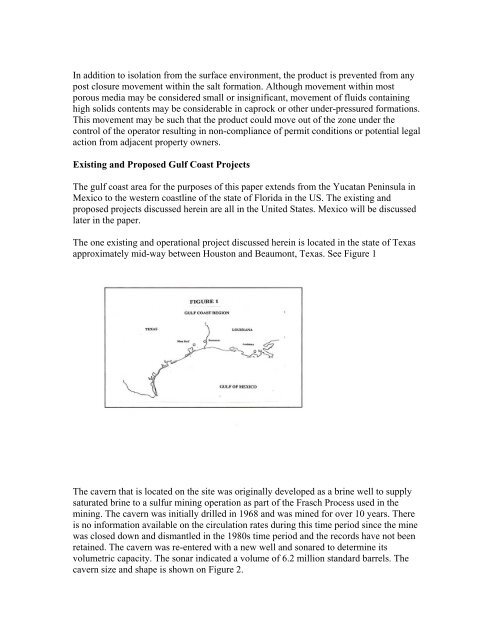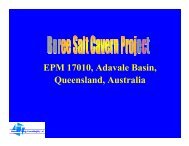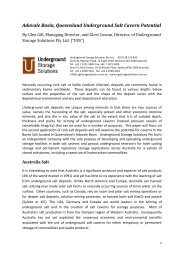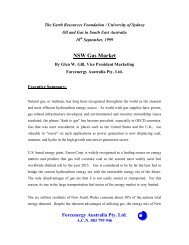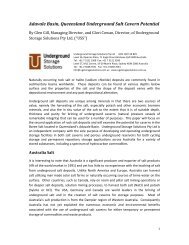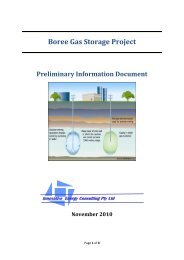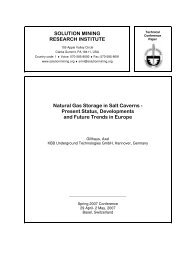Gulf Coast Waste Disposal in Salt Caverns
Gulf Coast Waste Disposal in Salt Caverns
Gulf Coast Waste Disposal in Salt Caverns
Create successful ePaper yourself
Turn your PDF publications into a flip-book with our unique Google optimized e-Paper software.
In addition to isolation from the surface environment, the product is prevented from anypost closure movement with<strong>in</strong> the salt formation. Although movement with<strong>in</strong> mostporous media may be considered small or <strong>in</strong>significant, movement of fluids conta<strong>in</strong><strong>in</strong>ghigh solids contents may be considerable <strong>in</strong> caprock or other under-pressured formations.This movement may be such that the product could move out of the zone under thecontrol of the operator result<strong>in</strong>g <strong>in</strong> non-compliance of permit conditions or potential legalaction from adjacent property owners.Exist<strong>in</strong>g and Proposed <strong>Gulf</strong> <strong>Coast</strong> ProjectsThe gulf coast area for the purposes of this paper extends from the Yucatan Pen<strong>in</strong>sula <strong>in</strong>Mexico to the western coastl<strong>in</strong>e of the state of Florida <strong>in</strong> the US. The exist<strong>in</strong>g andproposed projects discussed here<strong>in</strong> are all <strong>in</strong> the United States. Mexico will be discussedlater <strong>in</strong> the paper.The one exist<strong>in</strong>g and operational project discussed here<strong>in</strong> is located <strong>in</strong> the state of Texasapproximately mid-way between Houston and Beaumont, Texas. See Figure 1The cavern that is located on the site was orig<strong>in</strong>ally developed as a br<strong>in</strong>e well to supplysaturated br<strong>in</strong>e to a sulfur m<strong>in</strong><strong>in</strong>g operation as part of the Frasch Process used <strong>in</strong> them<strong>in</strong><strong>in</strong>g. The cavern was <strong>in</strong>itially drilled <strong>in</strong> 1968 and was m<strong>in</strong>ed for over 10 years. Thereis no <strong>in</strong>formation available on the circulation rates dur<strong>in</strong>g this time period s<strong>in</strong>ce the m<strong>in</strong>ewas closed down and dismantled <strong>in</strong> the 1980s time period and the records have not beenreta<strong>in</strong>ed. The cavern was re-entered with a new well and sonared to determ<strong>in</strong>e itsvolumetric capacity. The sonar <strong>in</strong>dicated a volume of 6.2 million standard barrels. Thecavern size and shape is shown on Figure 2.


